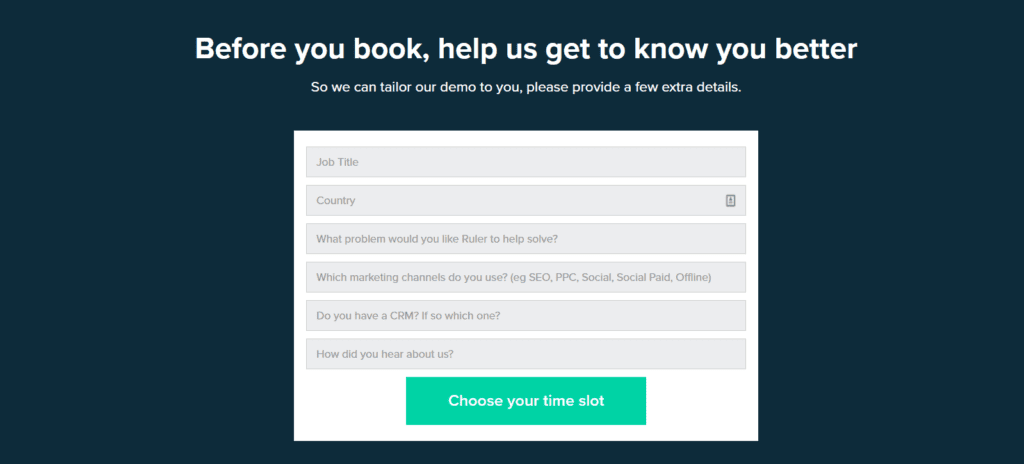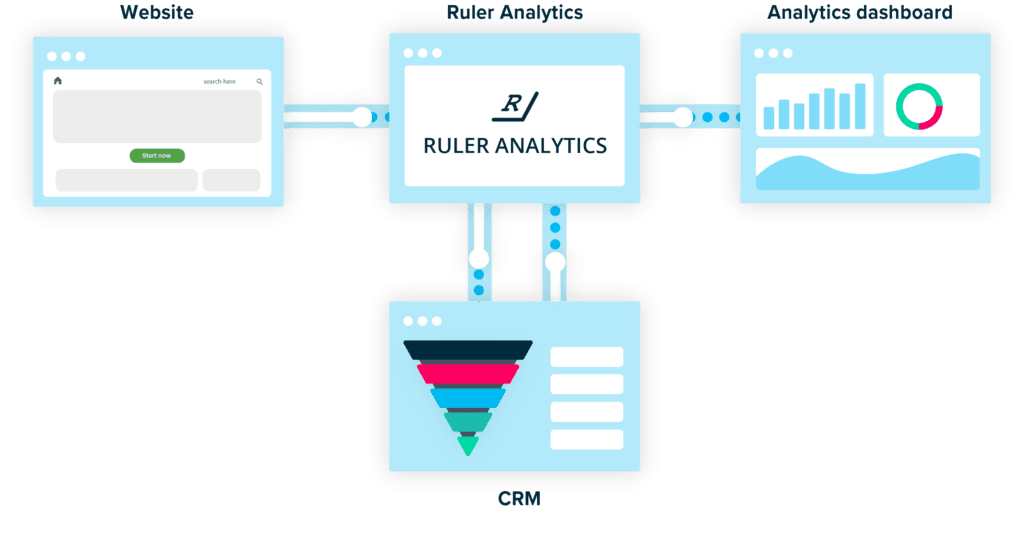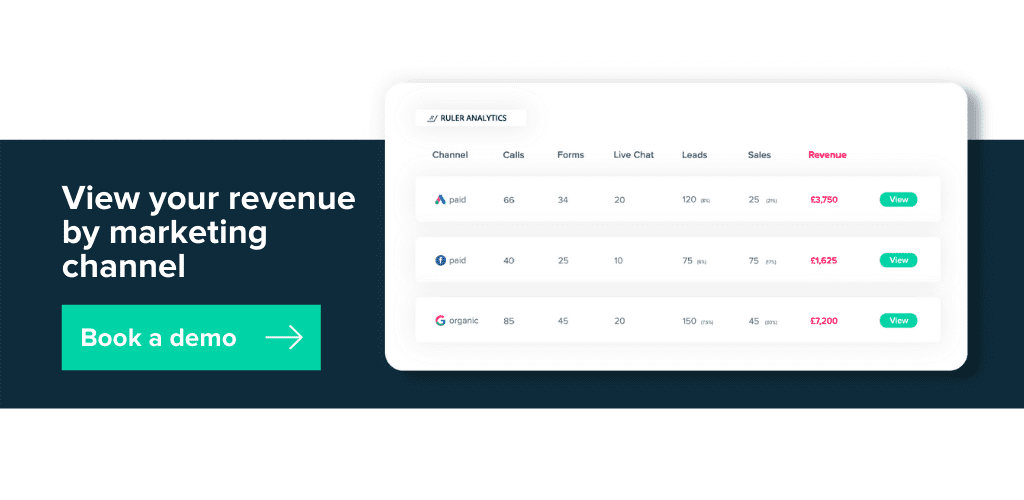Adding a ‘how did you hear about us’ field onto your form is pretty commonplace, but is it enough on its own to accurately attribute where your leads are coming from? We put it to the test.
We’ve spoken to a lot of businesses about marketing attribution. Tracking lead source has always been an issue, but many business leaders have come to us saying “I know where my leads are coming from because we ask them”.
Often, they would have some kind of drop-down list or a text box where users could specify which channel directed them to their website.
Of course, asking your leads directly is better than nothing, but how accurate is it?
We inspected the data for one of our clients and found 47% of the leads selecting the first option in the list were inaccurately attributed. It’s unsurprising to imagine users would self-select the first on the list for speed.

B2B marketers have been increasingly arguing for and against adding a ‘how did you hear about us’ field to your forms.
Many believe you can achieve self-reported attribution just by adding in a field to your form. You guessed it, the ‘how did you hear about us’ field is being lauded as the all-singing solution to marketing attribution.
Related: The ultimate guide to marketing attribution
We’re firm believers in testing theories, so we decided to try it out for ourselves.
This is likely only really relevant for those working in the SaaS and B2B world. So, in case you’ve stumbled across this blog and you’re not familiar with the field, here’s a quick explanation.
Many marketers working in B2B add a field to key forms on their website where they ask users to add in detail on how they first found their business.

We have a ‘how did you hear about us’ field on our demo form. It’s there as it allows the user to give context on how they found our business.
But is it wholly reliable? Well, that’s what is up for debate.
Some marketers believe that the form field allows the user to give context on how they believe they found you which is true attribution as it’s when they become fully aware of your brand and proposition.
Other marketers believe that the field is often inaccurate.
While a user might believe they found you via a social post, you might find that they actually found you via a paid advert. If you’re not using a marketing attribution tool then you would miss this piece of information.
Let’s get into the test and what we found out.
We drive the majority of our business through a book a demo form hosted on our website.
As mentioned above, we already have a ‘how did you hear about us’ field on our form, so we decided to correlate the ‘how did you hear about us’ field to our knowledge based on first-click attribution data held in our own attribution platform, Ruler Analytics.
We tested over 350 leads booked via our online form. We categorised each response so that we could easily group them. The majority of responses were one word answers. In a few cases, we got more qualitative responses.
So, without further ado, here are the results.
We broke down how leads said they were finding us and categorised responses to get a better overall view.
As you can see, there’s a wide range of different methods in which users are finding us online. That’s great for us.
But remember, this is only based on a first-click basis.
Customer journeys are getting longer and longer. While your first-click source is important, it might not be the most efficient way to track your impact.
With self-reported attribution, that’s all you’re getting.
With just this in place, it would mean any paid you might do that supports users to move along their customer journey, would be completely missed.
Usually you would assume referral traffic is a good indicator of brand awareness.
But what about organic searches of your business name? Or direct clicks when a user has been on your site before?
Referral traffic made up just under 14% of our total leads. That’s things like word of mouth, brand awareness campaigns, social media impressions etc.
So how do we manage brand-influenced leads?
Well, it’s simple really.
We can see how many people landed on Ruler’s home page that came from an organic search. Let’s assume they’re a brand view.
So, we add those to our direct referrals.
We then went through any lead that wasn’t from either of these sources and checked the self-reported attribution.
We found 47% of our leads were brand aware.
They had found us somewhere like LinkedIn, G2 or HubSpot first and then come to us to convert.
Direct traffic is constantly scrutinised as it can be hard to understand what it actually means. But with this clarity on data clear from the get-go, you can quickly discern how many of your leads are generated from brand.
Related: What is direct traffic in Google Analytics
And that leads to lots of inaccurate reporting and potentially missed opportunities when it comes to optimising your marketing.
So now we’ve seen how self-reported attribution reports on our inbound leads, let’s take a look at how marketing attribution does it.
In this case, we’ve obviously used our own marketing attribution tool, Ruler Analytics.
Related: Learn how Ruler attributes sales to your marketing
In this chart, we can see a huge number of leads came from organic Google. As we discussed in the previous section, 47% of these will have likely come from the brand awareness side of marketing.
Similarly for direct traffic, a large percentage of these sources will have been as a result of brand awareness-based traffic like word of mouth, dark social etc.
From this, it’s clear to see that organic search is our biggest driver of leads.
We don’t believe attribution on its own is enough.
There are invisible touches that an attribution tool can’t track. Things like impression data are so tricky to integrate into your data, you can wind up down a data rabbit hole if you try to prove everything.
Attribution should be used as a model.
But, we did find something of interest when we combined our data from Ruler and from the ‘how did you hear about us’ field.
With both together, we had an 81% accuracy on lead tracking.
That means 81% of leads we could definitively proved where they came from.
Not bad!
Clearly, the numbers don’t completely match up between Ruler and self-reported attribution, and for good reason.
No analytics tool can track word-of-mouth data on its own (though as we mentioned earlier, if you use Ruler with the added context, you can understand and interpret it.). Meanwhile, self-reported attribution lacks clarity on data.
So what are the main highlights when we consider the differences in stats?
We found that 72% of our total inbound demos either provided vague details or didn’t provide any detail at all.

This is a huge number when it comes to understanding your inbound leads, and it means you’re getting a very limited view of your lead quality.
Of course, this is just our lead data and this number might change business to business, but it’s important to consider how useless some of the data actually is.
A huge number of users didn’t input any data into the ‘how did you hear about us’ field form. This leaves a lot of data missing from the get-go.
With our marketing attribution in place, we were still able to connect these leads to their first marketing touchpoint.
But without a suitable marketing attribution tool, that data is lost. It leaves stats like return on investment and return on ad spend inaccurate and you’re left guessing what’s truly working for those missing leads.
Sometimes you get really detailed self-reported attribution. One person gave clear instruction when it came to attributing their source; “I found you after Googling about tracking leads”.
From our perspective, this is pretty unusual to get on a ‘how did you hear about us’ question.
When people answer like this, it does give us an indicator of channel source, and content source too.
But mostly, self-reported attribution was pretty weak. We categorised our data. But as you can see the majority were just putting ‘Google’, ‘Article’ or ‘Online’ as a source.
This information isn’t telling us much at all.
While ‘Google’ and ‘Organic’ provide some context, it’s pretty vague. If you’re running pay-per-click ads on Google, how do you know if they found you on paid or organic Google?
And organic could mean via your own SEO, or via someone else’s that led to you.
It’s a great starting point, but it’s not that helpful in the long run.
As we expected, having the form field in place supported us to enhance our attribution. A few users saw posts about us on Reddit.
They then came directly to our website.
Without the form field in place, we wouldn’t know that this was the case.
As such, you can see how it’s valuable.
This could be counted as a brand awareness piece. Initiatives like this and word of mouth, or dark social aren’t easy to track so having this insight is invaluable for us as it helps us understand the role channels like Reddit can play in creating new leads.
We already knew how essential organic content is for our inbound lead generation.
But without marketing attribution, we can’t pinpoint which content pieces exactly are most useful.
For marketers working in SEO and content, we learned that 76 different pages were the first-click source for these 350+ inbound demos.
We found that blog content on a first-click basis drove 59% of our inbound demo requests.
Our home page was the landing page for 33% of leads from a first-click perspective which makes sense as 29% of demos came from sources that would link to our home page ie referral traffic.
Related: How to see what content and keywords are driving inbound leads
Without our attribution tool in place, we would never have known which blogs were working.
And that’s across multiple levels.
The first is understanding how much traffic blogs are getting. The second is understanding how many leads that first blog results in creating. And lastly, is learning how much revenue is created as a result of that blog post.
Well, it’s clear from our experiment that we rely on attribution. Of course, we already knew that organic drove the majority of our inbound lead generation. What works for you will depend on your main investment areas.
And you might find that you get a bit more qualitative data on your own form field. In an ideal world, people would be sharing in-depth analysis on how they found you.
The reality is they mostly put a one-word answer that gives you very little to go off of.
However, direct traffic is a thing. And it’s very tricky to track.
Related: What is direct traffic in Google Analytics and how to minimise it
So our method is to do both, and why not?
It takes no effort to add a field to your form. And attribution is pretty easy to integrate into your marketing stack too.
Remember, Ruler didn’t just give us insight on the channels we’re driving leads from. It showed us the content too.
And if you were running paid ads, you would be able to break this down to an ad and keyword level too.
Related: How Ruler can optimise your strategy
So, how does Ruler fill in the gaps of self-reported attribution?
The truth is, attribution is useful no matter what business you’re marketing. If you’re generating leads, dealing with long customer journeys or using paid as part of your marketing then you’d benefit from attribution.
The way Ruler works is simple. It tracks users landing on your website, scraping data like their source, what content they engage with and if they convert.
It hosts and stores that information, building a customer journey up if you will.
When that user converts, it fires all the data held on that user over to your CRM, giving you a clear indication of where that lead came from.

At the point of sale, Ruler will scrape the revenue data inputted against that user and then fire it to your analytics tools. There, it will be automatically attributed to the influencing channels, campaigns, content, ads and keywords.
Sound good? Learn more about how Ruler works and why you need to integrate it into your marketing stack.
Or, get started by booking a demo with the team. You’ll be able to see the data in action and get started with proving what’s working, and what isn’t.
